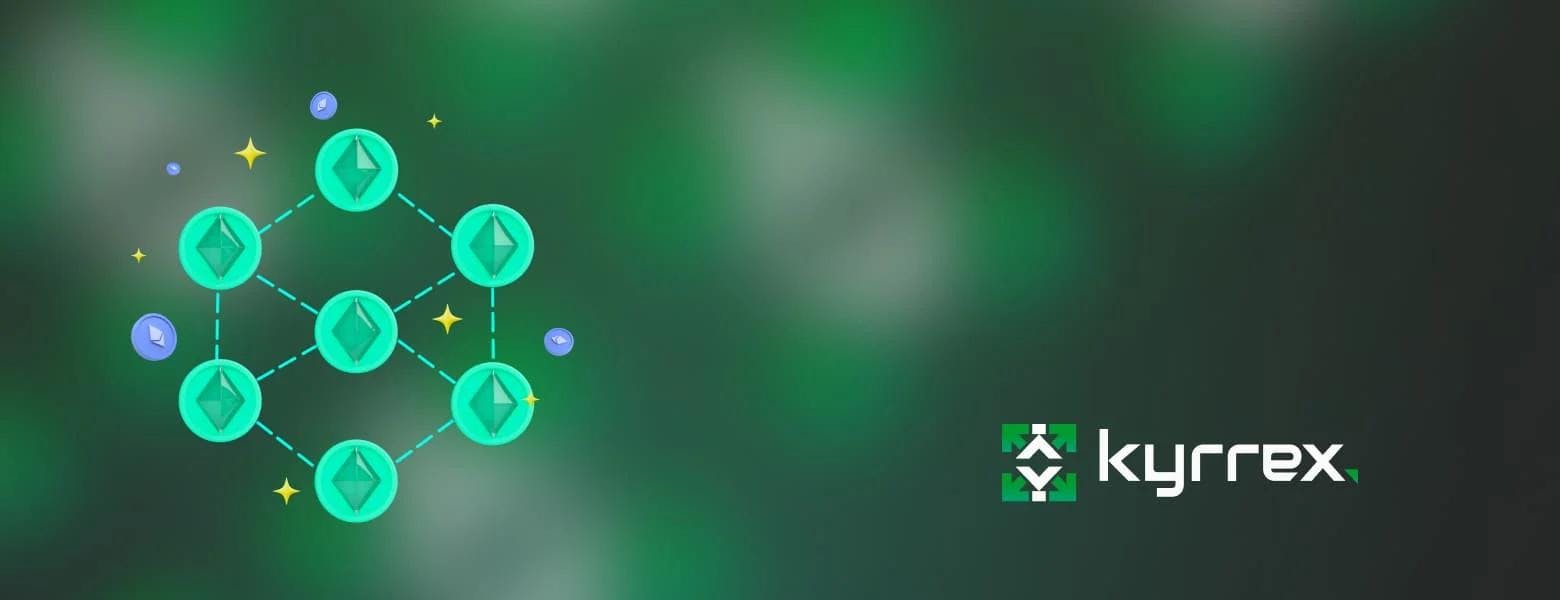
Ethereum Merge & the Future of ETH Proof-of-Work

Ethereum’s Merge is the latest narrative in the blockchain and crypto industry, taking up more and more of investors’ contemplations and raking up greater uncertainty about the future. Characteristically defined as Ethereum’s move away from a consensus mechanism driven by proof-of-work (PoW) to one driven by proof-of-stake (PoS), the transition has stirred up varying actions and reactions. Is this the end of an era, the cusp of standardization in the crypto industry, or a tumble down the rabbit hole?
The Merge, otherwise known as the coming of Ethereum 2.0, is imminent and anticipated to revolutionize Ethereum’s ecosystem. The migration from PoW to PoS will not only open up more doors for users to earn tokens; it will also amplify ETH’s usability, improve the blockchain’s scalability, and make it more secure.
But the past is a foreign country and the future is even more unfamiliar. Therefore, mixed in with the expectation of PoS benefits is a shedload of worries. Will the new system of Ethereum cryptocurrency jettison mining opportunities? And if it does, what is the future of the current PoW protocol?
Vestiges of the Past and Vanguards of the Future
Considering that Ethereum is a leading crypto chain, its anticipated exodus from PoW to PoS is very likely to impact the entire crypto industry. Faced with the imminent migration, users are asking, “Can I mine Ethereum after the Merge?” and, “what will change after the Ethereum Merge?”
Regarding whether the new framework for the Ethereum cryptocurrency will jettison mining and PoW altogether, the answer is not certainly yes. Yes, the Merge is a watershed event that will likely chuck the crypto industry from the position of instability and uncertainty that currently characterize it. But there are bound to be vestiges of the old system that will continue to work, at least until the PoS protocol is fully and irreversibly implemented.
Certainly, with the Post-Merge, the Surge, the Verge, the Purge, and the Splurge in view, it is a golden age for some users. Despite the nebulous outline of the future of PoS, a fraction of Ethereum’s user community is confident in the evolution of blockchain’s architecture. So, for the fraction that is still hesitant about joining the PoS wagon, will it be the Blue pill or the Red pill?
Perhaps a bit of information will help users decide, not that user decisions will forestall the release of Ethereum 2.0.
The Merge
The Merge centers around Ethereum’s PoW protocol fusing with Beacon Chain’s PoS system to create one new PoS framework. The product of this fusion is a consensus mechanism that promotes all-around user participation and greater decentralization than the current framework of PoW can provide. In short, the Merge is all about Ethereum’s protocol redesign which allows token holders to earn a bit extra as transaction validators provided that they are willing to stake their assets with the network.
So, apart from the advertised pros of the Merge for users, what is the rationale for the movement from PoW to PoS? The most frequent justification offered in response to such inquiries is that PoS is more environmentally friendly. Therefore, the protocol is safer regarding the principles of sustainable development. Also, the move will put the crypto industry under the spotlight, this time for good. Also, transactions on the chain will be faster and more secure.
In short, Ethereum’s Merge is a leading-edge upgrade that can define the direction of blockchain tech for the next decade or more. Better yet, the Merge will redefine the hitherto dilatory expedition towards genuine peer-to-peer transactions, smart contracts, and all the other trappings of the blockchain-enabled utopia.
Between PoW and PoS
At the heart of Ethereum’s Merge narrative are the PoW and PoS consensus mechanisms. These are trade protocols that indicate who validates records of transactions and how. In PoW, the system allocates rewards to miners based on how much computational power they can commit to the system to validate transactions and create new ETH. On the contrary, PoS involves the system randomly selecting users to do the same thing, except without conditions on computational might.
So, with PoW, miners earn validation rewards based on their mining work. Thus, more mining equals more rewards since the mechanism requires miners to solve cryptographic puzzles to validate blocks, thereby creating more tokens for use and distribution, and getting clearly preset rewards. In contrast, validators on the PoS framework earn rewards based on how much ether they've staked. The higher the stake, the higher the rewards.
Responsive Market Conditions, Miners’ Optimism, and Unshakeable Tokens
So far, even though the Merge is yet to be implemented in its entirety, there are indications that post-Merge market and trading conditions will rattle things up a bit. This is already the case with the reports that adaptive Merge models are up and running. These reports are driving the crypto market and are expected to continue to do so. ETH is already up and growing, and smart traders and investors are taking positions foreseen to yield significant returns in light of the murky PoW-PoS scrimmage.
With every gain on ETH in response to the exodus to ETH PoS, some miners are strengthening their resolve to stick around after the Merge occurs. These are the miners that will likely go on accepting and validating transactions despite knowing that these transactions may turn out to be ghost variations of the real thing that is happening over at the PoS side of the Ethereum bench. After all, even though the Ethereum PoW algorithm may continue to recognize their work to add new blocks to the network, the tokens they get in return will likely go SNAP! after the Merge.
Then there is the matter of the ETH PoW tokens. The future of these is also unclear. There are indications that Ethereum developers will create parachains to serve as the bridge between PoW and PoS. Maybe (and this is a big "Maybe") popular applications like Metamask will allow the full integration of tokens from both chains, thereby preventing the Ethereum ecosystem from divesting users of access to PoW tokens.
The future of the Ethereum mining pool is also subject to much scrutiny with most experts expecting the spotlight to shift to staking pools.
The Left-Behind Narrative for PoW Miners
One of the foremost knock-on effects of the Merge and an indication of the future of ETH PoW is the changing status of miners. From being the core component of the PoW engine to unusable appendages in the PoS framework, the traditional concept of crypto mining has been effectively tossed aside.
Miners will have a lot of hardware and software just lying around, all rendered useless as a result of the Merge. One recent report has it that Ethereum miners have spent around $15 Billion on GPUs in the last 18 months, not counting other mining gear. So that puts the loss in perspective.
Unsurprisingly, ETH miners are having to appeal to investors regarding the benefits of PoW—or the reason the Ethereum network should be pressed into integrating PoW tokens into the new system. But most of the Ethereum leaders have already moved on. Returning to PoW would take more than just user persuasion unless spent resources can be revived in one way or another.
The Duality of Risk and Opportunities for Ordinary Users
Undoubtedly, ordinary members of the Ethereum community whose circumstances made them into professional miners will have to bear their losses. The war-besieged Ukrainians making an honest living from mining top this category of users. So, the uncertainty about their future on the blockchain grows progressively overwhelming with new reports of the Merge.
Of course, these users can simply become validators if they are willing to stake tokens. This will save them the use of complex and advanced machinery and software, such as mining rigs and GPUs. So, there are scores of opportunities for users on ETH PoS, as long as they are willing to commit to it.
(And what about the expensive hardware they will now no longer need? Well, there's a thriving secondary market for computer components.)
Moreover, the difficulty bomb built into the PoW protocol is a very effective incentive for everyone to migrate to the PoS chain or get infinite-degree burns. The bomb is a code that slows down PoW Ethereum to a point where it's practically unusable. Moreover, removing it from the network is easier said than done.
Therefore, miners intending to stick with ETH PoW indefinitely will have to face the music, unless the Ethereum network agrees to assign skilled developers to sustain the PoW framework. But that is most likely out of the question.
In fact, for those who wish to die on the PoW hill, there's already a PoW alternative—Ethereum Classic (ETC). Perhaps they could join that breakaway network and become validators. But then, the niche status of ETC is perhaps a pointer to the general apathy of crypto investors, developers and users towards PoW-powered blockchains. Ethereum’s status as the first smart contracts platform made it an exception but its founders and developers always intended to move in a different direction entirely. Now that day is here.
On the Anticipated Efficiency and Performance of the PoS Chain
Many users and analysts anticipate great things from the Merge and the consequent use of the ETH PoS Chain. For one, the Chain is expected to offer increased stability since the system will issue fewer ETH and smaller block rewards. Furthermore, the Merge will likely increase user participation in all things Ethereum, stimulate high-volume trading interests in basic users, and steady bustle and doings all across the network.
Also, the Merge is expected to boost Ethereum’s security and scalability. Transactions will be faster, reaching 100,000 transactions per second. This will also set the stage for the forthcoming quadripartite era of the Surge, the Verge, the Purge, and the Splurge, all of which will drive Ethereum’s fully decentralized future operations. Buy Ethereum (ETH)
And then there's the very real energy consequences of moving from PoW to PoS. The Merge will eliminate mining from Ethereum, reducing the network's electricity consumption by 99 percent. That's a mammoth figure and will usher the ETH network into the community of energy-efficient blockchains.
The Merge and User Tokens
Now let's talk about the effects of the upcoming transition on the blockchain's token, ether, held by miners and ordinary traders and investors. What happens to the tokens on cryptocurrency exchanges, decentralized wallets, and offline ledgers?
As of right now, there's no certainty.
Because ETH 2.0 or the Merge is a hard fork, support and development will migrate to the new network. This means PoW Ethereum will be stripped of significant developer and infrastructural and community support—all significant drivers of a viable cryptocurrency.
Regarding the ETH tokens held on exchanges and elsewhere, what will happen precisely remains a mystery. There's currently no consensus although the position of the Ethereum foundation remains that all users and holders migrate to ETH PoS tokens and depreciate the old ETH PoW coins.
How exchanges will handle this transition is a fascinating subplot. Some, like Binance, said they will evaluate the support and withdrawal of the forked tokens before adopting a firm stance. This means that if there's significant activity with forked PoW ETH coins, Binance might decide to list and support it alongside the new ETH PoS.
Poloniex, an exchange owned by Justin Sun, Tron founder and holder of 1 million ETH tokens, claimed that it would list ETHw and ETHs. Another exchange, BitMex has gone even further to suggest it will enable leverage trading for whatever the eventual PoW ETH token turns out to be.
What seems certain is that some exchanges will airdrop new ETHw tokens to holders of ETHs. Perhaps, some will give users on their platforms an option to either keep their old ether or migrate to a forked ETHw.
It's important to note that the ETH already on exchanges won't be affected in any way. Normal traders don't need to do anything. The Merge simply transfers the whole Ethereum mainnet data to the new PoS chain. Tokens already issued will remain valid and users can hold, stake or trade their ether (and all ERC-20 tokens) as normal.
Those who keep their ETH coins off centralized exchanges like Binance, Coinbase and Kyrrex crypto are able to move their ether to the new PoS blockchain via a one-way bridge if they wish to participate in validating the network.
ETH holders who just wish to hold their tokens offline or off-exchange don't need to do anything. Eventually, the old ETH will be merged with ETH PoS and they'll be able to perform transactions and use dApps as usual on the new Ethereum chain.
The Merge: An Overview of Sour and Great Expectations
In brief, the Merge presents a duality of risks and opportunities for crypto traders and investors on the Ethereum network. With the era of miners drawing to a close, validators are the new gods of the system. But these gods are very likely to be few considering that a staking fee of 32 ETH (or $65,800 based on current market conditions) is required to join the validator’s club.
Also, several analysts have noted that the Merge will engineer the perfect landing dock for centralization. After all, considering the expensive entry free to the validator’s club, big holders will be able to set up shop in the new chain ahead of everybody else. And if there are no regulations against this obvious gap for governance manipulation, then the sermonized narrative of full decentralization is poppycock.
On the positive side, despite the drawbacks of the Merge as to the staking fee, would-be validators with no access to 32 ETH can still make the most of the PoS chain by contributing to staking pools owned by actual validators, thereby qualifying for rewards themselves. This is only one of the multiple ways in which the Merge will offer users more breadth to benefit from the Ethereum network.
Meanwhile, the Merge is a golden opportunity for brave software developers and project concept managers. After all, the migration from PoW to PoS has opened a large market for business development, software creation, and more.
With these implications of Ethereum’s Merge, the future of ETH PoW appears to be set in stone—it won't have one. Since the PoS protocol is the next step in the evolution of blockchain tech, users have no other choice but to join the wagon, trusting that the new protocol satisfies the conditions for Satoshi Nakamoto’s dream of a stress-free and enabling trade/financial system.
All in All
If Vitalik Buterin is serious and Ethereum will keep overshadowing every other network, then the Merge is only the first of several developments to come. There is still the Surge, the Verge, the Purge, and the Splurge, which will join up with the Merge’s 55% to reach Ethereum’s envisioned ideal.
If there is even the distinct possibility that ETH PoS will eventually and completely swallow up ETH PoW, especially with the difficulty bomb that makes mining progressively impossible, then there is no future for ETH PoW. Then again, nothing is ever cut-and-dried in the march of technological progress.
Overall, outside the costs of Ethereum users migrating their assets from the PoW chain to the PoS chain, the Merge seems to be a good idea. It could herald the next cycle of blockchain evolution, but it has certainly fired up Ethereum’s intended advancement.






